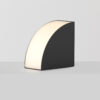Art can trigger many things in us, from joy and fascination to anger and disgust. But this perception is by no means a one-sided experience. On the contrary, it is a complex interplay of psychological processes, cognitive mechanisms and individual experiences. These in turn are influenced by cultural, social and personal influences. Today I would like to share with you an interesting article by Son Preminger from Frontiers in Human Neuroscience. He explores the profound effect of art on our brain and its ability to change and grow positively through aesthetic experiences.
When we look at art, play an instrument or take part in theater or dance, a variety of networks are activated in our brain. These networks include areas that are responsible for visual and auditory processing, attention, memory, emotions or motor functions. These different areas activate depending on the art form. Interaction with art therefore has numerous positive effects on our brain. It strengthens our visual perception skills, optimizes our attention and expands our ability to express ourselves creatively.
Art can be used to induce long-term changes in cognition, emotion, and behavior.
Excerpt from the article1

In his article, Preminger examines how repeated and prolonged engagement with art can have the potential to bring about lasting change in the brain. He refers to the process of “experience-dependent plasticity” – the brain’s ability to change structurally and functionally in response to repeated stimuli.
He suggests using art as a medium to create purposeful, transformative experiences that can gradually bring about lasting change. Regular visits to art galleries or the continuous practice of artistic activities could therefore help to improve our perception and interpretation skills and increase our emotional well-being. What is important here is the intensity and regularity of these experiences.
These exciting findings open up completely new perspectives and show how powerful art can be. By regularly engaging with it in all its forms, we can not only sharpen our creative and aesthetic senses, but also shape our brains in a way that improves our cognitive abilities and strengthens our emotional well-being! Very interesting!
Further reading
https://www.frontiersin.org/articles/10.3389/fnhum.2012.00096/full
Original Publication
Son Preminger, Transformative art: art as means for long-term neurocognitive change, Front. Hum. Neurosci., 24 April 2012, Sec. Cognitive Neuroscience, Volume 6 – 2012 | https://doi.org/10.3389/fnhum.2012.00096


